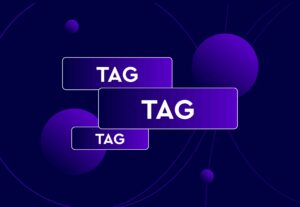
5 International SEO best practices for global expansion

While you may feel like you’ve mastered SEO in your immediate environment, why stop there? When it comes to digital marketing, the world is your oyster. Understanding the best international SEO practices can help you boost visibility on a worldwide scale.
By optimising your website for a global audience, you can increase your outreach and expand your business in ways you never thought were possible. That’s not to say that going international is nothing short of a heady business endeavour.
That’s why we have broken down 5 of the best International SEO practices so you can boost your global visibility.
1. Where do you want to go?

Before you start brushing up on your Spanish just because you had a nice, sunny few weeks in Tenerife a few years ago, or finessing your French because you’re more than partial to a croissant or two, you need to think realistically about the right international audience for your products and services.
In order to decide on the best place to expand to for your SEO strategy you need to find out where the demand is to have a better understanding of how to get the best out of your optimisation.
When evaluating which international market holds the strongest potential for your business, you will want to consider whether your business:
- Could naturally decide to serve this market in the future
- Could be missing out on a foreign market with a huge search demand
- Could be missing out on a foreign market with low search competition
This is where your competitors come in handy. If one of your competitors is popular in a foreign market, it doesn’t matter whether that market is in New York or Kazikstan, your competitors’ traffic can potentially become your conversions with the right marketing strategy.
2. Translation, translation, translation
If you’re expanding to a global market, you must know what the most widely spoken language of the audience you’re targeting is. Even better if you know how to speak and write in it proficiently as well!
Its not enough to just assume that everywhere will speak English, or that Google Translate can just bridge that language barrier for you.
Amy Leach, Organic Lead, says:

“This is where a translator – an actual human person rather than an AI generator – comes in handy. To successfully market your products and services to an international audience, you need to ensure that your content is not only passably legible, but also that it resonates with cultural rhetoric and linguistic nuances.
Although an online translator tool might provide you with the basics, to ensure that all of your content is accurate you should consider investing in a translator who can do this for you. This will also improve accessibility and lead to higher conversion rates on your website.”
If people are struggling to interpret your content, it doesn’t matter how good your products and services are, the chances are they’ll go to another company that’s either native to their location, or which has made the effort to improve accessibility.
3. Internal SEO URL structure selection
If you’re familiar with digital marketing and content creation in the UK, chances are you’re also aware of the basic format of a typical URL which is normally comprised of a protocol, a hostname, and a file name. However, it can be a little different if you’re planning on marketing yourself to an international audience.
One option is to go for the Country Code Top-Level Domain (CCTLD). If we were to expand into the US for example, our CCTLD would look like this:
- www.embryo.us
As the name would suggest, this is a very popular format for international domains because most internet users tend to be familiar with the top-level domain of their country.
Unfortunately, popularity carries a fairly hefty price tag – especially if you’re purchasing multiple domains to split your content across. What’s more, many SEO experts consider multiple domains to have a negative impact your SEO score by diluting your PageRank.
An alternative option is to create a Subfolder for international SEO. This is where you keep the original domain but add a slash at the end with the relevant country code. For example:
- www.embryo.com/us
Popular amongst SEO specialists and webmasters alike, under a subfolder all of the content remains within a single domain. Having only one international website to maintain means that it is also easier to create a new version of a page by simply changing the URL path (or slug) rather than creating a new page on a completely different hosting format.
A third option for an international website is to create a subdomain. You may be less familiar with this format, but they do carry some unique benefits such as the ability to use customisable naming conventions. Like a subfolder, a subdomain also allows you to use localised hosting.
For us, this could look like this:
- www.us.embryo.com
Whichever of these you decide to use will depend on your SEO budget and intent behind your website. However, one international URL format we strongly recommend avoiding is parameterized URLs. This would look like this:
- www.embryo.com/page?gl=US
As you can see, this looks a lot clunkier than the other URL options and can confuse bots as well as internet users.
4. Keyword research remains key overseas
As with any SEO best practice, keyword research remains a vital step in establishing a successful search engine optimisation strategy. When expanding to foreign SEO markets, its important that you carry out thorough keyword research for each market, especially where there are linguistic variations and differences.
Not only will this allow you to present well-articulated and relevant content to your target audience, but it will also improve your rankings by allowing you to localise your worldwide SEO strategy for each of your chosen markets.
In order to work out which search terms will generate the most traffic from your foreign market you can use an online keyword explorer tool to see which markets hold the highest search volume for certain keywords and search queries.
5. Hreflang: a real attribute to your international website

Hreflang is an HTML attribute used to specify the language and geographical targeting of a webpage. This is especially important if your international expansion involves creating multiple versions of the same web page in different languages.
The Hreflang is a piece of code that you can include in the backend of a page (or in the sitemap). It tells Google which market the current page intends to target, as well as alternative options for users in other markets.
Hreflang not only improves the crawlability of your site – which in turn helps to boost rankings – but it will also enhance user experience.
Localise international SEO
Overall, a large part of a successful international SEO strategy is the effective localisation of your content for a foreign market. From keyword research to content, in order to appeal to your target audience you need to make sure that you’re accurately representing their search queries through an accessible, language first approach.
By carrying out research about the place in which you’re looking to market your business, you can enhance and diversity your website and form wider networks within your industry on a global scale.
Talk to Embryo…
If you’d like to chat to us about international SEO and how our team of experts can help you grow your global visibility, contact us today!
Deeper insights:
